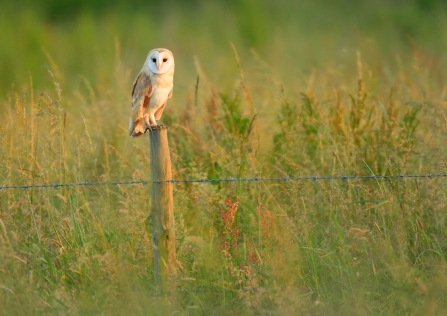Did you know that around 70% of England’s landmass is farmland? If you walked the length and breadth of the country, you would spend most of your time navigating arable fields and dodging curious cattle.
Imagine if every farm made a little space for nature. Your walking experience would certainly be enriched - you might hear the sweet chirping of goldfinches in the hedgerows, and the buzz of honey bees carrying pollen between wildflowers. You may see linnets and yellowhammers flying overhead, and pheasants wandering between fields.
Here at the Wildlife Trust we want to see this idyllic scene become a common reality, which is why we work closely with landowners across our two counties, helping them manage their farmland to benefit wildlife as well as their livelihoods. We are delighted to have seen some spectacular results.
We recently conducted a winter farmland bird survey on a former farm in South East Hampshire – we have been working with the owner for four years to help him improve his land for wildlife.
We saw a huge variety of different species, including meadow pipits, chaffinches, reed buntings, stonechats and goldfinches. We were particularly excited to stumble across a woodcock, and even spotted a barn owl.


